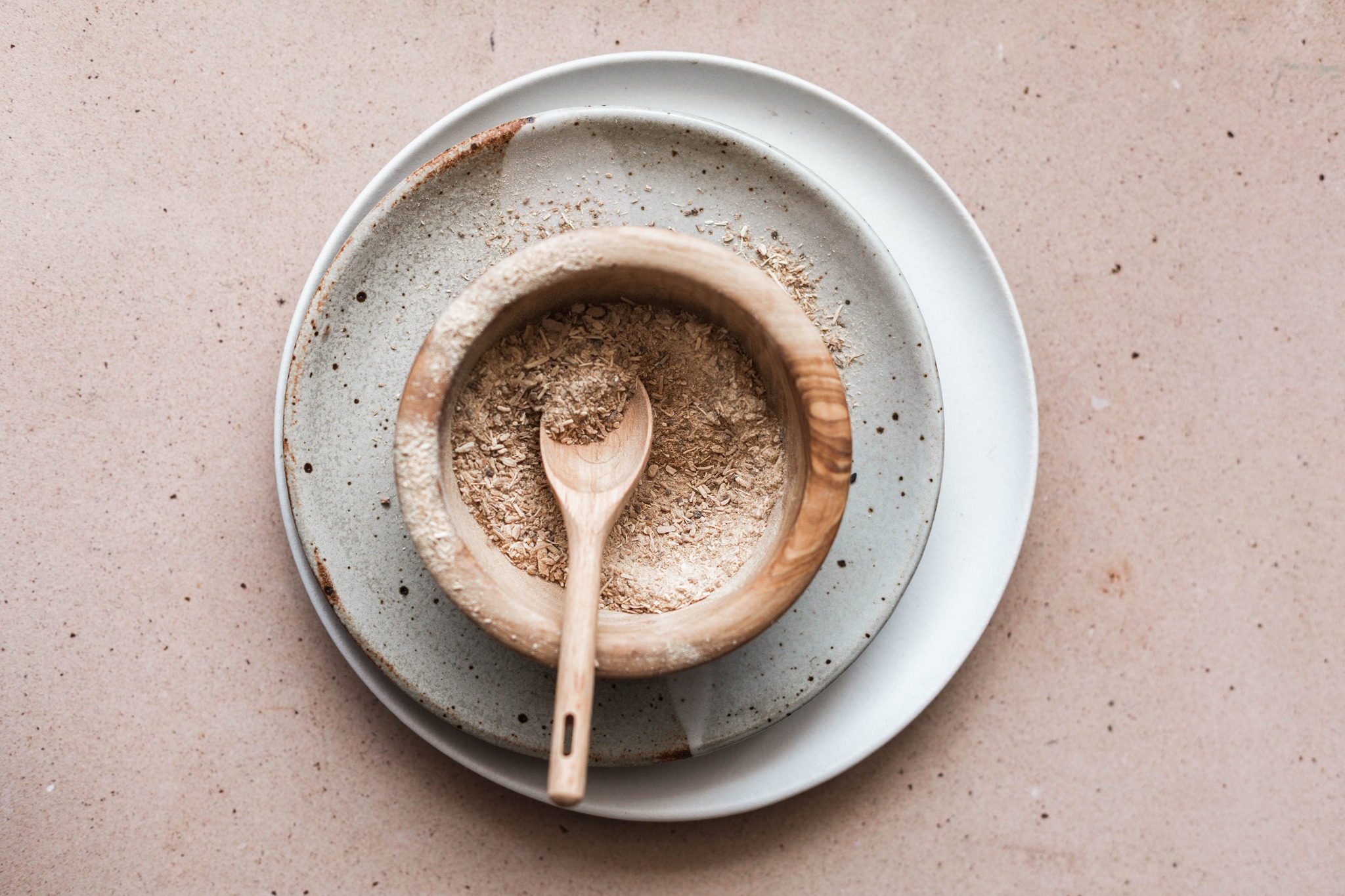At 61 years old, I’m all too familiar with the effects of aging on my skin. It’s more dry, wrinkly, and saggy. Like everyone else, I would prefer my skin to be more like it was in my twenties and thirties. Are there magic supplement solutions for loose, sagging, wrinkly, aging skin? First, we need to understand what causes dry, wrinkly, and aging skin to answer that question.
1. Reduction in Collagen and Elastin
- Collagen is a protein that gives skin its structure and firmness. Collagen production decreases as we age because of:
- Cellular Senescence: As we age, the cells responsible for producing collagen become less active. These cells age along with the rest of the body, slowing down their ability to make collagen.
- Decreased Growth Factors: Growth factors, which play a crucial role in collagen production, decline with age. This reduces the signalling required for collagen production.
- Changes in Hormones: Hormonal shifts, particularly a reduction in estrogen levels during menopause, can lead to a drop in collagen production. Estrogen has a significant impact on skin thickness and collagen levels. Outside of hormone replacement therapy (which I don’t do), estrogen will remain low after menopause. However, there are diet, lifestyle, and supplement strategies to optimize their new lower levels after menopause.
- DNA Damage: Cellular DNA can become damaged over time from internal processes like oxidative stress. As cells accumulate damage, their ability to produce collagen diminishes.
- Accumulation of Enzymes That Break Down Collagen: With age, the activity of enzymes called matrix metalloproteinases (MMPs) increases. These enzymes break down collagen, leading to a net loss as collagen is broken down faster than it’s produced. UV exposure also triggers the production of MMPs, contributing to premature aging and collagen degradation (photoaging). Heavy metals also negatively impact MMPs.
- Reduced Blood Supply: As we age, blood flow to the skin decreases, limiting the supply of oxygen and nutrients that support collagen production. Exercise is one of the best ways to counter this loss of blood flow.
- Oxidative Stress: Over time, the body is exposed to free radicals from the environment (e.g., UV light, pollution, smoking). These free radicals damage cells, including collagen-producing cells, reducing collagen production. Our antioxidant defences also decline with age, making it harder for your skin to protect itself from oxidative stress.
- Glycation: Glycation is a process where sugar molecules bind to proteins like collagen, forming harmful molecules called advanced glycation end products (AGEs). These AGEs stiffen and break down collagen fibres, making them less functional and leading to a loss of collagen over time.
- Elastin is the elastic that helps the skin bounce back after stretching or contracting. Like collagen and for similar reasons, elastin levels also diminish with age, making aging skin less resilient and leading to sagging and wrinkles.
2. Thinning of the Skin
- Over time, the skin’s outer layer (epidermis) and deeper layers (dermis) become thinner. This thinning makes aging skin more fragile and prone to wrinkles. Since the epidermis and dermis comprise collagen and elastin, many of the above factors cause skin thinning.
3. Loss of Fat and Muscle
- Fat and muscle beneath the skin diminish as part of the body’s natural aging process, reducing the skin’s plumpness and giving it a hollow or saggy appearance. Several biological, hormonal, and lifestyle factors drive this change:
- Hormonal Changes: As we age, levels of hormones such as growth hormone, testosterone, and estrogen decline. These hormones play a significant role in maintaining muscle mass and determining fat distribution. The decrease in estrogen (in women) and testosterone (in both men and women) reduces the body’s ability to maintain muscle tissue and causes shifts in fat distribution.
- Age-Related Muscle Loss: Sarcopenia is the gradual loss of muscle mass, strength, and function with aging. This process starts around age 30 and accelerates after age 60. It happens due to reduced physical activity, changes in protein metabolism, and decreased muscle repair mechanisms. Muscle tissue, which supports and fills out the skin, diminishes, causing the skin to appear saggy and contributing to the overall thinning of the body’s silhouette.
- Loss of Subcutaneous Fat: Subcutaneous fat (the layer of fat beneath the skin) naturally decreases with age, especially in areas like the face, hands, and arms. This fat acts as a cushion and provides volume to the skin, so its loss makes it look thinner, more fragile, and more prone to wrinkling and sagging—additionally, fat distribution changes with age. For example, fat may accumulate more in areas like the abdomen (belly fat) but diminish in areas where it previously helped maintain a youthful appearance (e.g., cheeks, temples, and hands).
- Reduced Physical Activity: Many people become less physically active as they age, leading to a natural decline in muscle mass. Regular exercise, particularly strength training, helps preserve muscle tissue, but with age, maintaining the same level of activity becomes more challenging due to factors like joint pain, fatigue, or illness.
4. Decreased Oil Production
Because of the hormonal changes mentioned previously, the oil-producing glands produce less oil, leading to drier skin. The natural moisture barrier weakens, making it harder for aging skin to retain hydration.
5. Decreased Cell Turnover
Skin cell regeneration slows down with age, leading to a buildup of dead skin cells. This causes the skin to look dull and rough, making it more prone to fine lines and wrinkles.
6. Environmental Damage
Years of exposure to UV radiation from the sun damages collagen and elastin, causing premature aging (photoaging). This results in wrinkles, age spots, and sagging skin.
Other factors like pollution, smoking, and lifestyle habits can also accelerate skin aging.
7. Reduction in Hyaluronic Acid
Hyaluronic acid is a natural substance in the skin that helps retain moisture. The body produces less of it as we age, leading to dryness and a lack of hydration, which contributes to wrinkling.
Hyaluronidase, an enzyme that breaks down hyaluronic acid, becomes more active with age. This means that even though the body produces some hyaluronic acid, it is broken down more quickly as we age. The balance shifts toward breakdown rather than production, leading to lower levels of hyaluronic acid in the skin. Hyaluronidase activity increases with age due to many factors: heightened oxidative stress, chronic low-level inflammation, UV exposure, hormonal changes, and cellular senescence.
Accumulating oxidative stress damages skin cells, including those producing hyaluronic acid. Cumulative damage from oxidative stress contributes to a decline in the skin’s ability to create and retain hyaluronic acid.
8. Gravity
Over time, gravity pulls on the skin, especially on the face, contributing to sagging and deepening wrinkles.
In short, the combined effect of internal changes (hormones, oxidative stress, aging cells, inflammation), environmental exposure, and natural aging processes leads to drier, less elastic skin that sags and forms wrinkles.
So, What Can Be Done to Prevent or Reverse Wrinkles, Sagging and Aging Skin?
Based on all of the above, the following strategies may help slow down the effects of aging on your skin:
Exercise
Exercise increases blood flow to your skin, delivering more oxygen, vitamins, minerals and other nutrients to skin cells. It also helps your body manage your blood sugar better, so there is less glycation of proteins (AGEs). Thirdly, it helps to maintain your muscle mass. And finally, there is a transient increase in testosterone after weight training that may help with maintaining your muscle mass. Maintaining muscle mass is one of the best things you can do for your overall health.
Antioxidants
Your body has two ways of mitigating the damage from oxidative stress:
- Ingestion of antioxidants. Antioxidants are found naturally in foods. They include vitamins A, C, E, zinc, selenium, CoQ10, glutathione, and lipoic acid. Vitamin A is mainly eaten as its precursor, beta carotene. Your liver then transforms beta-carotene into vitamin A. Beta-carotene is abundant in orange vegetables like carrots and green leafy vegetables. Vitamin C is plentiful in fresh produce, especially peppers, kiwi, citrus fruit, berries, and melons. Vitamin E is found in nuts and seeds. Zinc is available from egg yolks, pumpkin seeds, and meat. Selenium is found in nuts, particularly Brazil nuts. CoQ10 is plentiful in meat, especially organ meats. Lipoic acid-rich foods include red meat, carrots, beets, spinach, and broccoli. Antioxidants can also be taken in supplement form, although some, like glutathione, are not well absorbed in the gut.
- Your internal antioxidant system. Your body has antioxidant systems that kick in when oxidative stress is high. It is managed by a regulating factor known as NRF2. Many supplements we know to be “healthy” positively impact NRF2, such as green tea, curcumin, sulforaphane, quercetin, and resveratrol.
Preventing Hyaluronic Acid Break Down
Certain substances in foods, called polyphenols, appear to have at least a weak effect at decreasing hyaluronidase activity, protecting your hyaluronic acid from being broken down. These include apigenin (found in chamomile), tannins (found in tea), and luteolin (found in celery, parsley, peppers, olive oil, and rosemary).
Reduce Carb and Sugar Intake
Carbs turn into sugar in your body, raising your blood sugar. Increases in blood sugar will increase the glycation of proteins, which is a factor in the loss of skin elasticity and increased wrinkling. Maintaining stable blood sugar through the consumption of protein and non-starchy vegetables prevents spikes in blood sugar that will glycate proteins. As we age, our body’s ability to handle these spikes in blood sugar declines due to lower physical activity and increasing insulin resistance and inflammation.
Do Collagen Supplements Help?
Limited good-quality evidence shows that taking collagen as a supplement helps reduce wrinkles and skin aging. Collagen is a protein. Taking it as a supplement supplies the amino acids your body needs to rebuild into collagen. Eating protein sources (eggs, chicken, fish, meat, nuts, seeds, etc.) can similarly supply more amino acid building blocks to make proteins like collagen. The problem is not so much about not having the building blocks for collagen; it’s about the changes in how well we build collagen as we age and how much more easily it is broken down.
What About Anti-Aging Creams or Serums?
As many of the factors listed above are internal, I remain skeptical that topical treatments like masks or creams can have a significant impact. Addressing internal issues like avoiding blood sugar spikes, maintaining good protein intake, exercising for blood flow and nutrient delivery, increasing antioxidant intake, and selecting supplements to address all of the factors that cause aging skin seems like a better, more lasting approach.
Need help to know which supplements you should take to keep your skin healthy and prevent aging skin? Call me to book an appointment at 416-481-0222 or book online here.
Book Now

